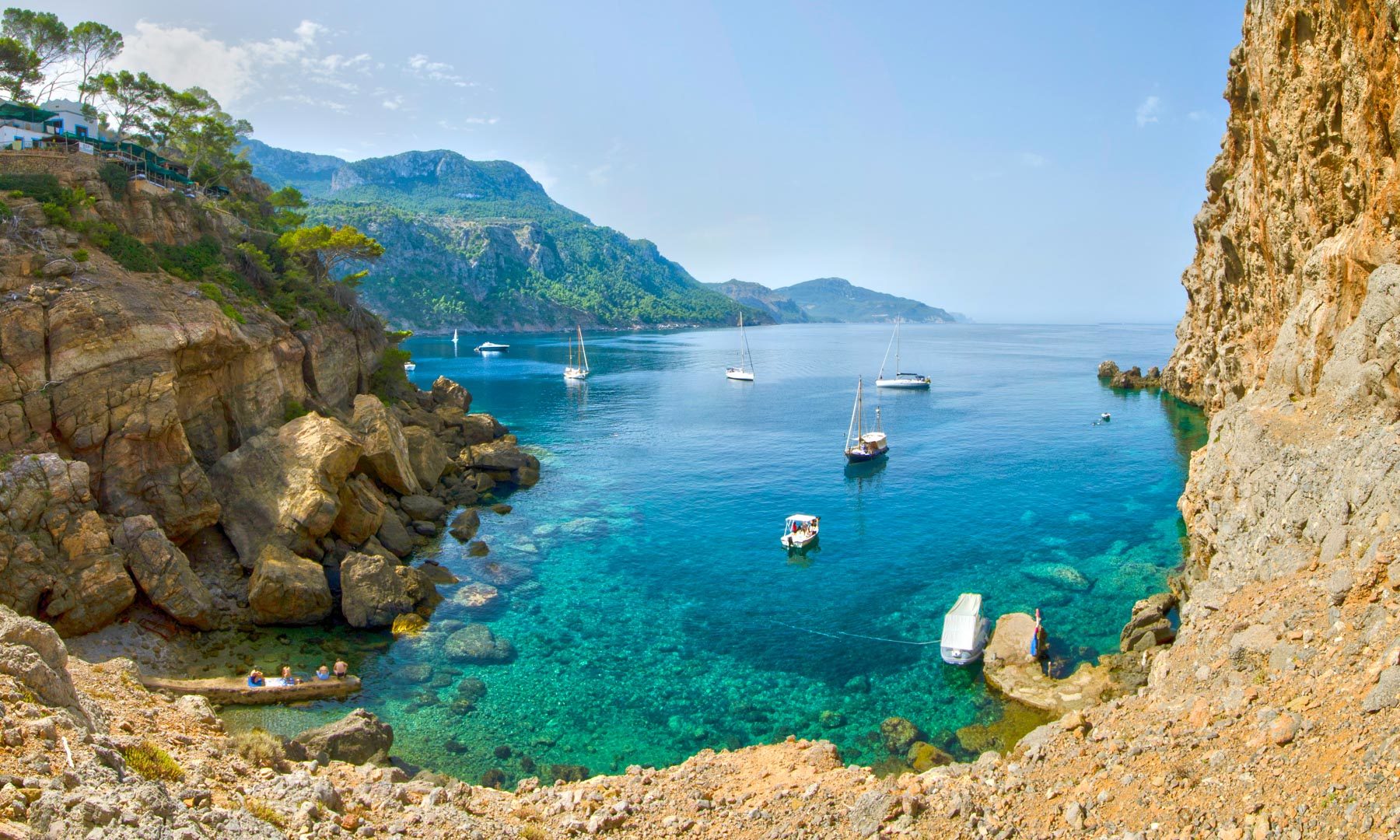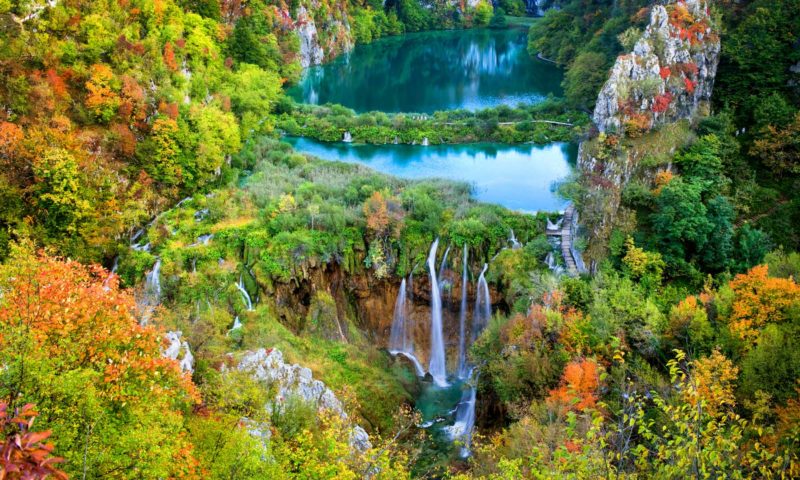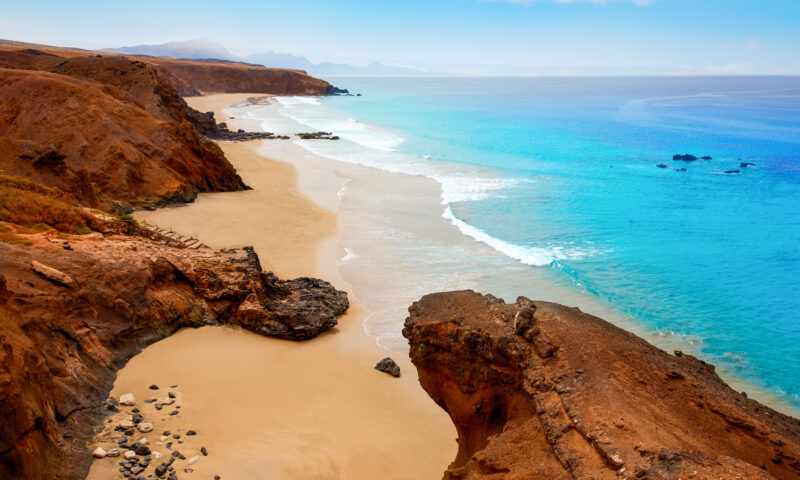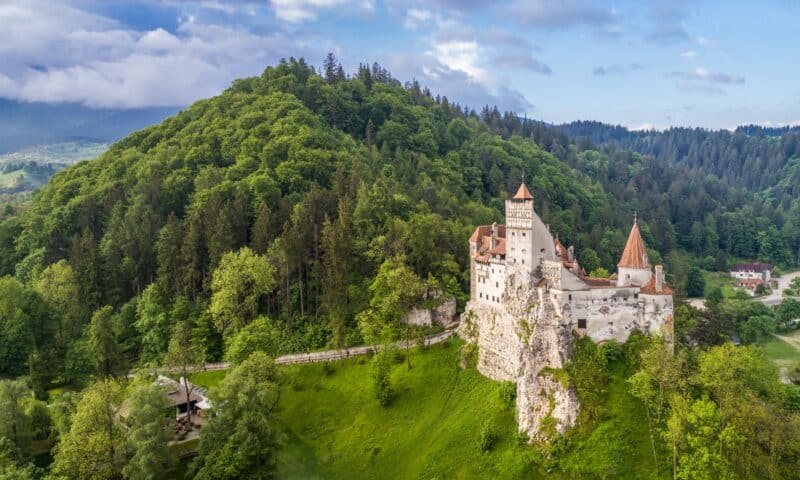Majorca (Mallorca) is best known for its beaches and its nightlife, but trust us when we say that the largest island in the Balearics has much more to offer than sun, sand, and sangria!
Of course, Majorca has those three delights in abundance, and we won’t judge anyone who wants to spend their vacation on a beautiful Majorcan beach, sipping cocktails, and ordering up plate after plate of tapas and paella. Even if that’s your plan, though, you might find it thwarted when you realize just how many must-visit Majorca attractions there are to see!
In Palma, the island’s capital city, you can explore Gothic streets, walk through medieval palaces, and be awed by the imposing architecture of the cathedral. There are Michelin-starred restaurants to dine at, famous bakeries serving up sweet treats, and more local wines than you could reasonably hope to try on one holiday.
Majorca is made for exploring. There are epic road trips to be had along the coast, the Tramuntana Mountains are home to long-distance walking trails, and no itinerary is ever complete without a catamaran cruise and a day of snorkeling or diving in the Mediterranean Sea.
With so many great things to see and do, you might not know where to start. That’s why we’ve compiled our list of the absolute best things to do in Majorca to help you plan the perfect trip. Stick to these fun and unique Majorca bucket list recommendations, and we have no doubt that you’re going to have an unforgettable time exploring this gorgeous Spanish island!
Don’t forget to check out our web story: The 15 Best Things to do in Majorca, Spain
Disclaimer: This post may contain affiliate links. If you make a purchase or booking through one of our links we may earn a small commission (don’t worry, it’s at no extra cost to you).
15 Fun Things to do in Majorca
1. Lounge on a Majorcan Beach
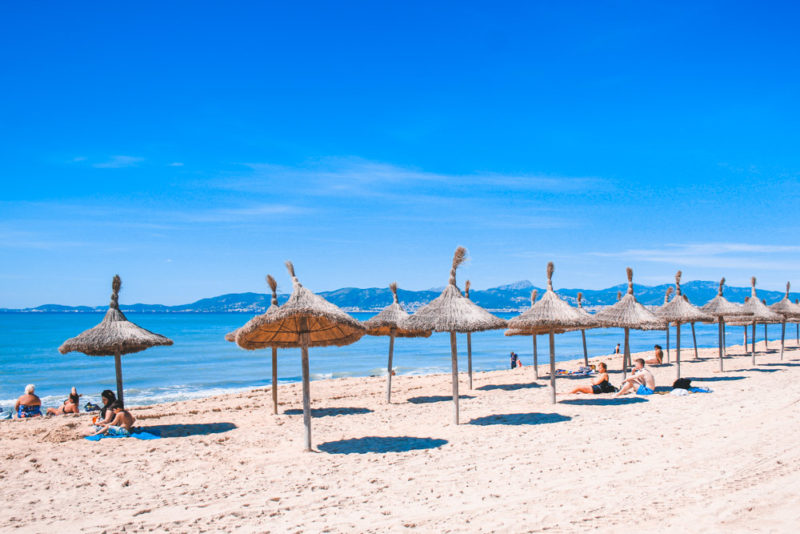
First up is the beach! After all, Majorca’s beaches are some of the best in Spain! There’s no doubt that Majorca is one of Europe’s most popular holiday islands, and the beaches are a major part of the draw.
You’ll find that the most popular stretch of coastline runs from Palma and goes east across Palma Bay to S’Arenal. This is where you’ll find the island’s major hotels and resorts, as well as an extremely long promenade that’s perfect for a long walk or bike ride.
This is where you’ll find S’Arenal Beach. In the summer season, you can rent sun loungers and order cold beers and jugs of sangria from the many beachfront bars and restaurants. If you’re in full holiday mode, then this is the beach for you!
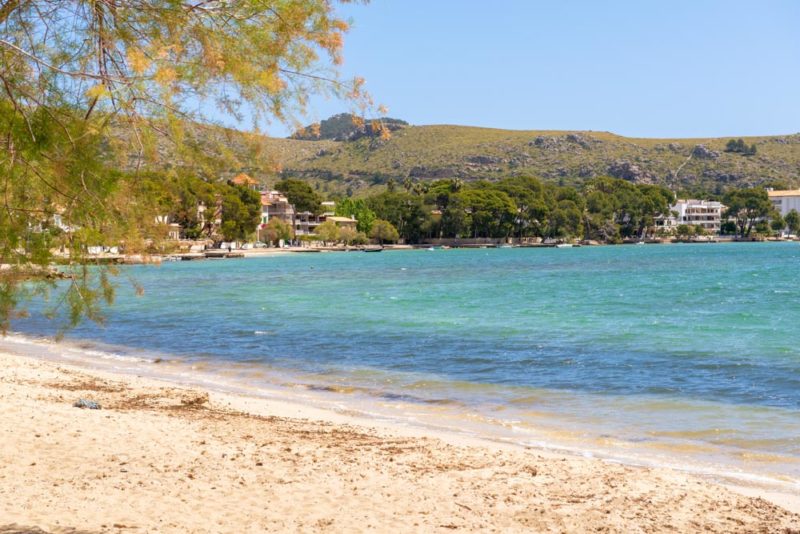

But S’Arenal Beach isn’t the only beach in Majorca – although it is the most accessible. Travel over to the more remote northeastern side of the island, and you can find Canyamel Beach, a long strip of white sand that’s backed by luxury resorts, mountains, and golf courses.
Travel to Pollensa Bay, and you can enjoy sheltered beaches and fresh seafood on the island’s northern tip, while the nearby Alcudia Beach is one of the longest stretches of sand in Majorca. Across the island, you’ll find many hidden beaches and coves, too.
Plus, outside of the summer high season, it’s not difficult to find a secluded spot far away from the crowds. Rent a car or a bicycle, and just follow the coast until you find your dream Majorcan beach!
2. Explore Cobblestone Streets in Palma’s Old Town

Once you’ve had your fill of sun, sea, and sand, then why not spend a day immersed in history and Gothic architecture in Palma? The city’s Old Town – or El Casco Antiguo, as the locals call it – is one of the best Majorca sightseeing destinations. You can easily spend hours strolling through its charming alleyways and losing your way on the cobblestone streets.
Bring a map (and, if possible, a sense of direction) because the likelihood is high that you will get lost! That’s not too much of a problem, because the Old Town is compact, and there’s something new (and old) around every corner.
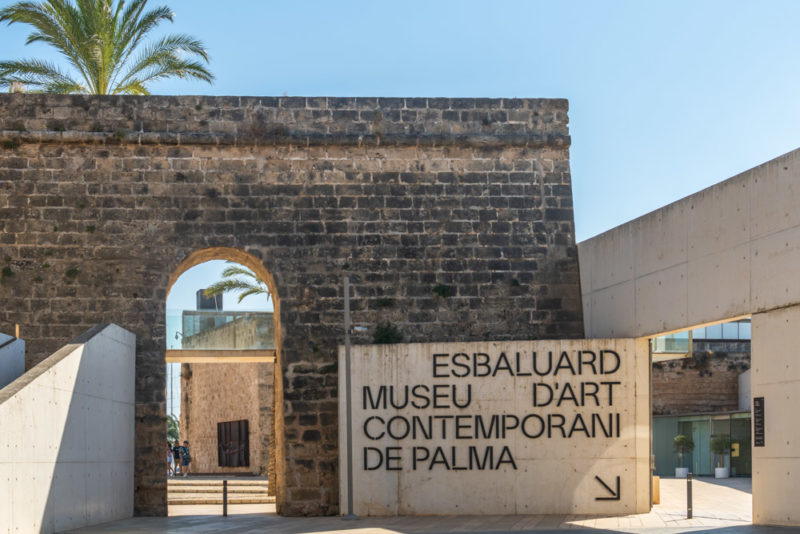
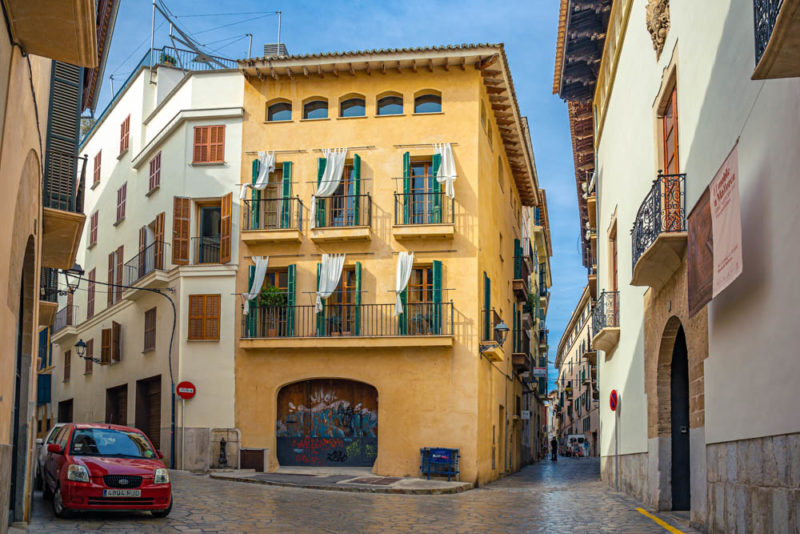
You can start at the cathedral, which is right next to the Royal Palace of Almudaina. Here you’ll find the elaborate walls and fortifications that were built to defend Palma from pirates and invasions. If you look to the south, you’ll have beautiful views over the Bay of Palma.
Head inland, and you’ll soon find yourself walking in the shadows of historic townhouses and old convents and monasteries as you make your way slowly toward the Plaza Mayor. This is the center of Palma, where you can pop into excellent museums – including Es Baluard Contemporary Art Museum – or stop off at tapas restaurants and bars for refreshments.
3. Be Awed by Palma’s Cathedral
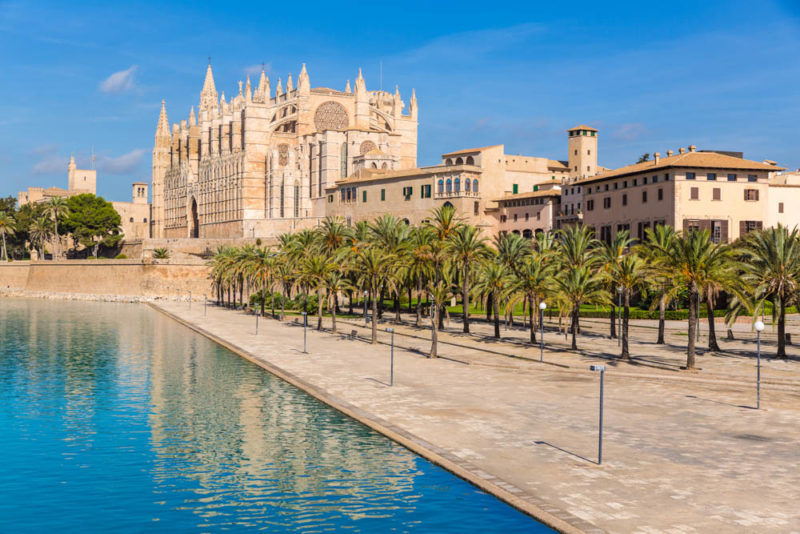
Palma’s awe-inspiring cathedral is one of the best sights in Majorca. Known to locals as La Seu, the tall spires of the cathedral can be seen from any vantage point in the city. In fact, the cathedral is so prominent that you can see it from miles away, further along the coast!
Palma Cathedral was built in an imposing Gothic style, and work began in the early 13th century. The cathedral was built to awe, and that’s because it was built on the ruins of what was a former Muslim Mosque.
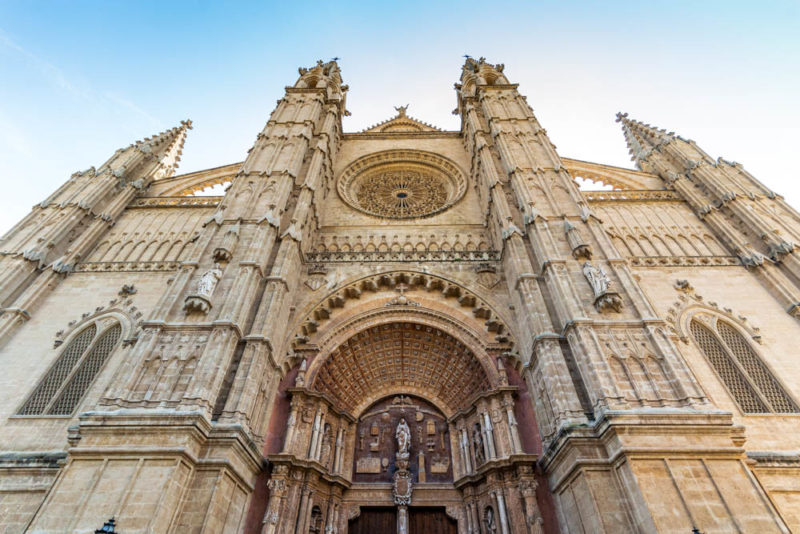
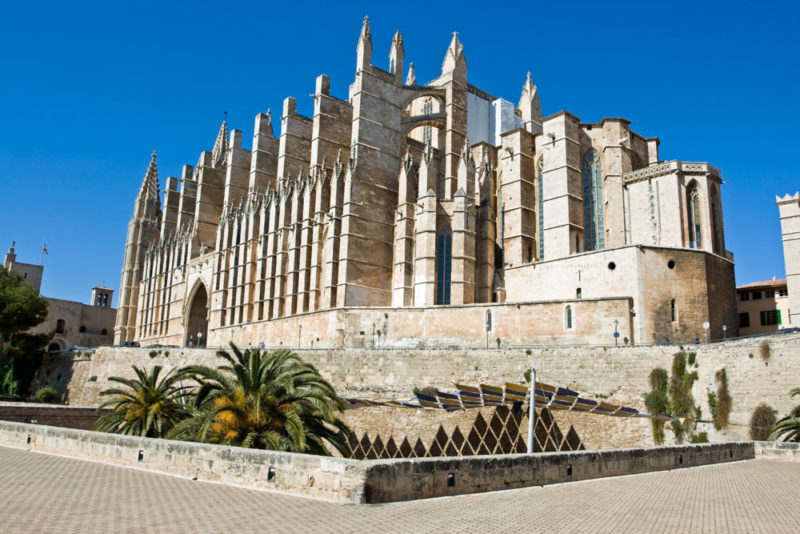
Palma was a Moorish island for many centuries, but during the Reconquista, Muslims either converted to Catholicism or were evicted from Majorca. Palma Cathedral, constructed on the orders of the Spanish King, would have been deliberately designed as an imposing place of worship for the island.
The sheer size of the cathedral is impressive, but just wait until you walk inside the hallowed entrance. The interior is on an even grander scale than the exterior. Plus, you’re sure to be amazed at the artwork, the dioramas, and the riches that are found inside.
If you can, we recommend joining a guided tour of Palma Cathedral. That way, you can learn more about the intriguing history behind the cathedral and the many changes and redesigns that the building has gone through over the centuries.
4. Find the Best Ensaimada in Majorca
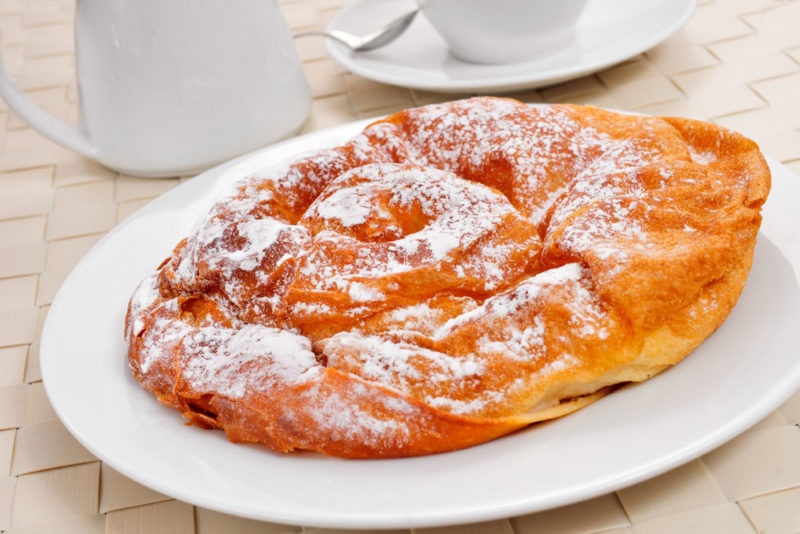
Majorca is home to many unique dishes, but ensaimadas are one of the island’s most popular culinary traditions. If you’re a fan of baked goods, you’ll quickly find out that ensaimadas are rather addictive!
Ensaimadas are traditionally prepared for festivals and holidays, and the secret ingredient is typically lard. The lard is mixed with a dough and then hand-stretched into a circular spiral or snail shape before being baked in an oven.


These days, ensaimadas come in all different flavors, with different fillings and different toppings – both sweet and savory – for you to try. You’ll see enormous, full-sized ensaimadas being sold in what look like takeaway pizza boxes, but you can also buy smaller portions at the bakeries.
Palma has some of the best-known ensaimada bakeries in Majorca. Horno San Cristo has been baking since 1910, and they are well known for their pumpkin ensaimadas. Even older than this is Ca’n Joan de s’Aigo, where you’ll find traditional ensaimadas that have been baked in the same style for 300 years.
5. Dine in a Michelin-Starred Restaurant
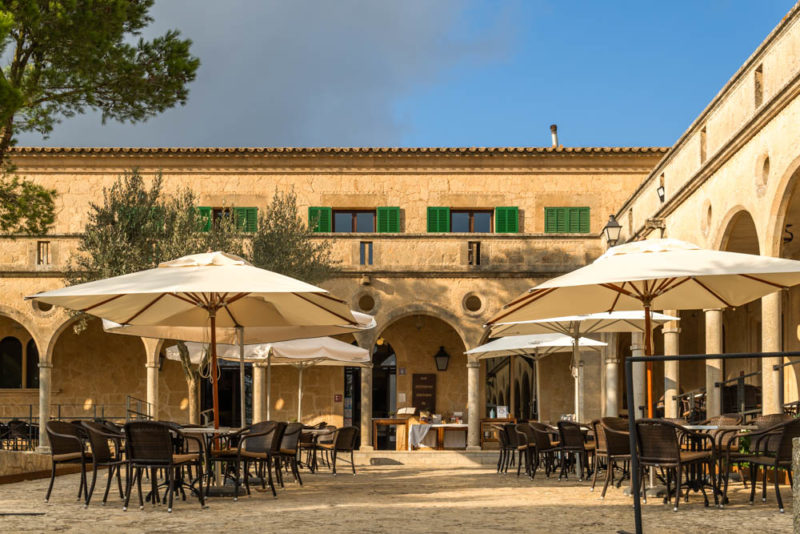
If you love good food, you’ve come to the right island! Mallorca has an incredibly rich culinary history, and the dining scene on the island is characterized by fresh produce that’s been brought straight from the farms or the ocean to the kitchen.
Majorca’s chefs love to serve fresh, seasonal, and local ingredients in their restaurants, and many of the island’s best eateries have been recognized in Michelin guides and with Michelin stars!
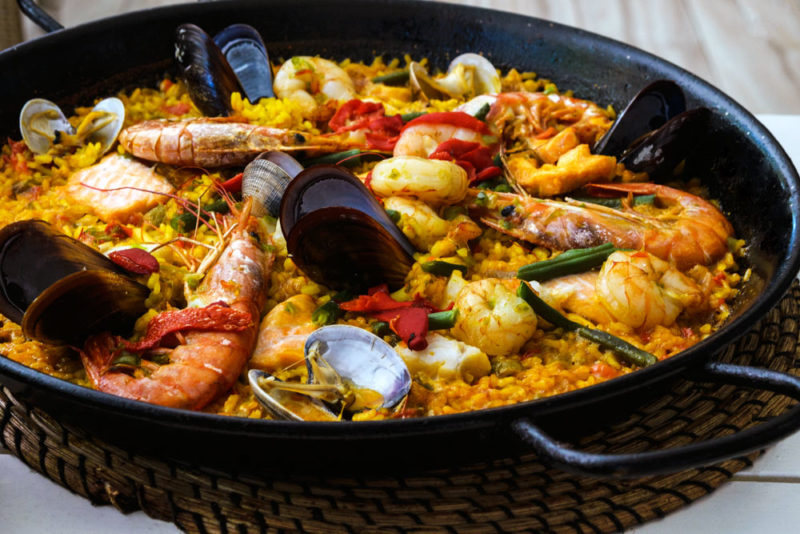
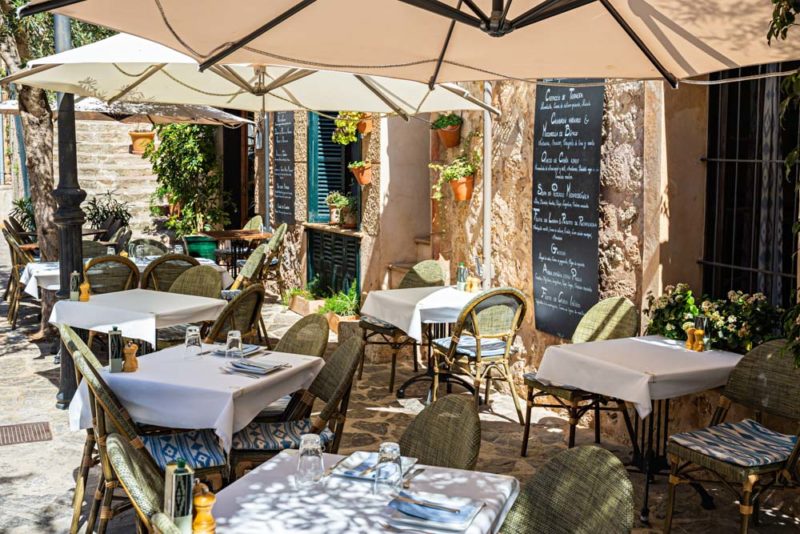
In Palma, book a table at DINS to experience the culinary delights cooked up by Head Chef Santi Taura at El Llorenc Parc de la Mar Hotel. Here you’ll find reimagined local dishes all served with farm-to-fork ethics.
Another Palma favorite is the Restaurant Marc Fosh, where Michelin-starred Chef Marc Fosh has designed a Mediterranean-inspired tasting menu that’s guaranteed to impress.
Marc Fosh also runs a restaurant on the other side of the island, at Hotel Pleta de Mar, where meat and fish are cooked using traditional open-fire techniques. There are many more Michelin-worthy restaurants to choose from, too, including Voro in Palma, Andreu Genestra in Capdepera, and Es Raco d’es Teix in Deia.
6. Ride the Vintage Train to Soller
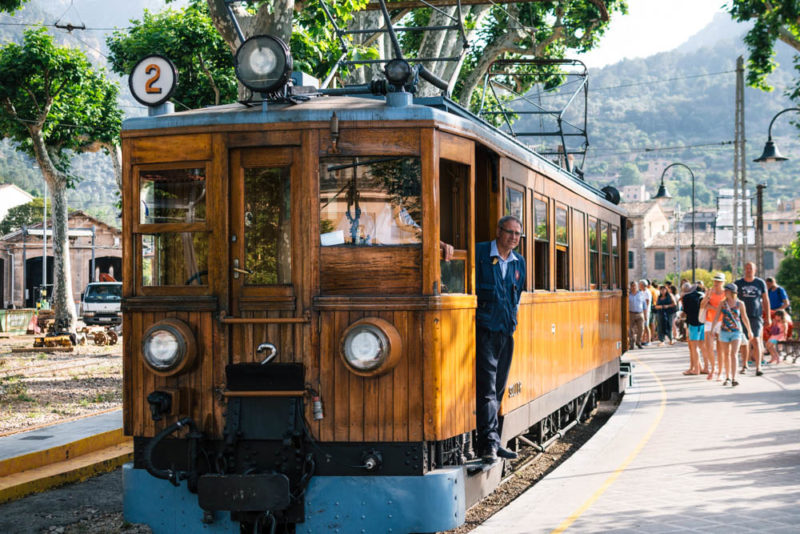
A vintage train ride to Soller is one of the must-do things in Majorca. The historic Palma to Soller train line dates back to 1911 and connects Majorca’s capital with one of the most charming towns in the Tramuntana Mountains.
You can catch the outbound train from a dedicated station that’s right next to the modern rail station in Palma. The train was originally designed to transport fruits from Soller to Palma, but these days, tourists are the main cargo.
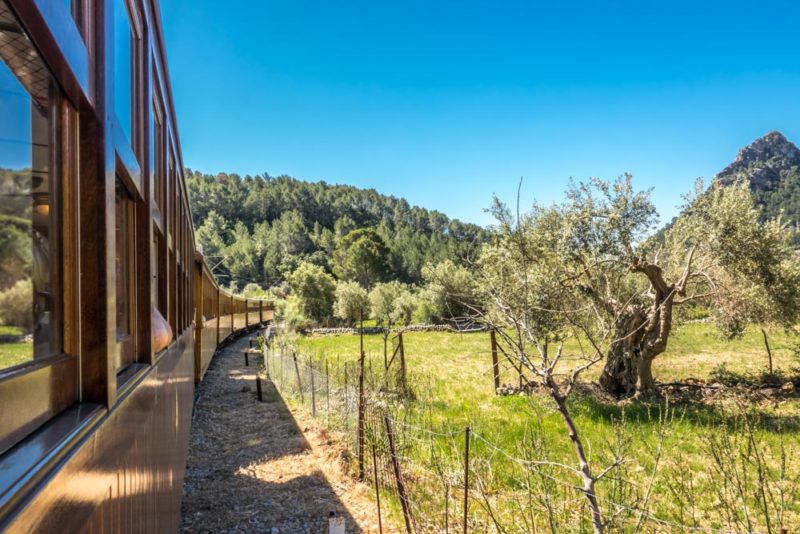
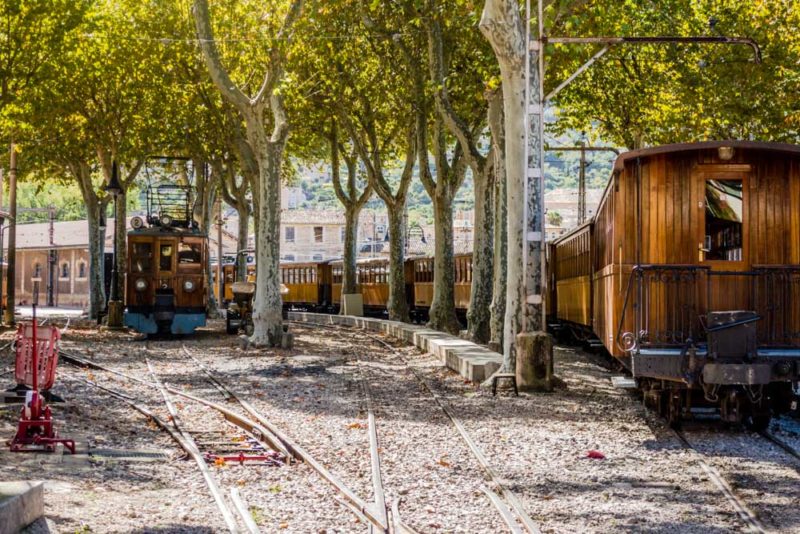
You’ll love how the old wooden carriages have been lovingly preserved and restored to their former glory. Plus, once you reach Soller, you can swap to the equally vintage tram line that runs down to the beach at Port de Soller.
The total journey time from Palma to Soller is around one hour. Along the way, you’ll be transfixed by the spectacular views out of the window.
The train line is a remarkable feat of engineering. You’ll enjoy the mountain views as you’re whisked through valleys and tunnels as the train works its way through the foothills of the Tramuntana Mountains.
7. Hike the Dry Stone Route
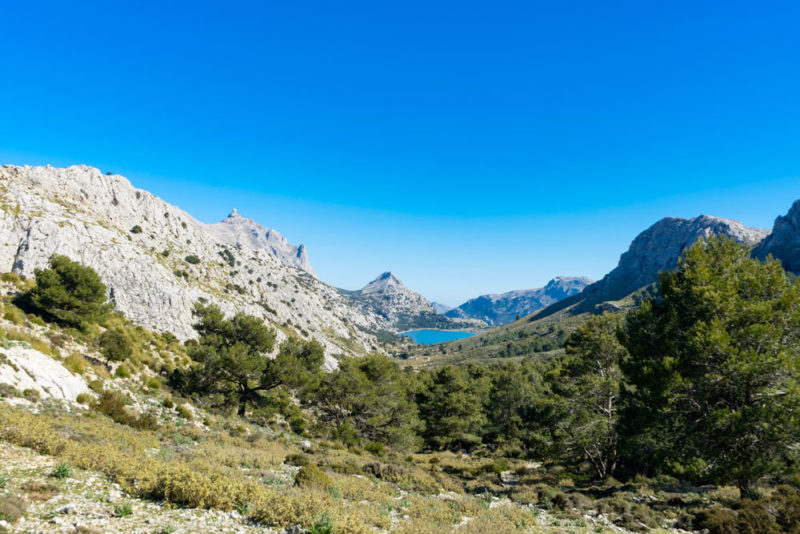
If you’re looking for an active, outdoor vacation, the Dry Stone Route is one of the top things to do in Majorca. This beautiful long-distance hiking trail takes you through the spectacular Tramuntana Mountains. You can tackle it in stages or attempt the entire route in one go.
Known locally as Ruta de Pedra en Sac (or less romantically, as GR-221), the Dry Stone Route offers just over 100 miles of waymarked hiking through mountains, valleys, and along the coastline. The route starts in Port d’Andratx, then climbs high into the Tramuntana Mountains before dropping back down to the coast at Port de Pollensa.

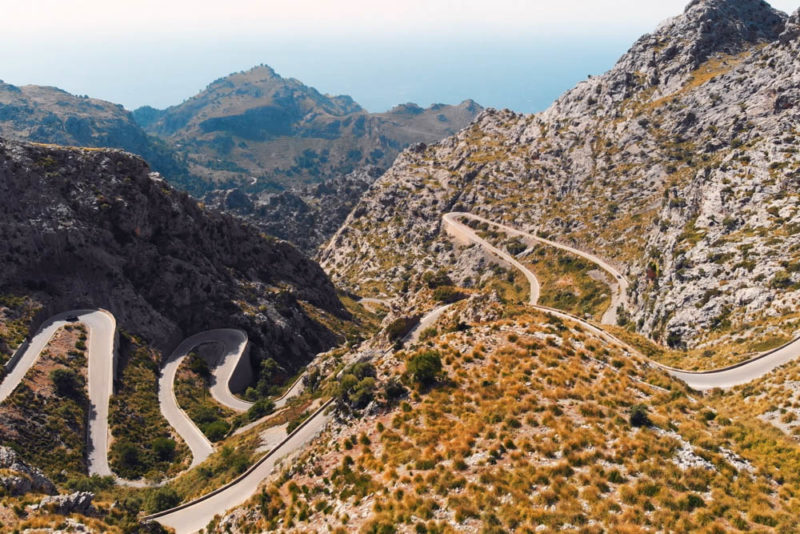
Along the way, you’ll walk through remote villages, enjoy scenic views over Majorca, and have the opportunity to stay in isolated refuges and monasteries deep in the mountains. If you’re walking the entire route in one go, you should plan for at least eight days of continuous hiking, not including rest days.
The Tramuntana Mountains are a UNESCO World Heritage Site, and the Dry Stone Route takes its name from the unique, “dry stone” architecture that was pioneered here by the Moors many centuries ago. The Moors used dry stone to shape the landscape, building stone terraces, walkways, and aqueducts in order to make the arid land fertile enough for farming.
8. Sip Fine Wine in Banyalbufar
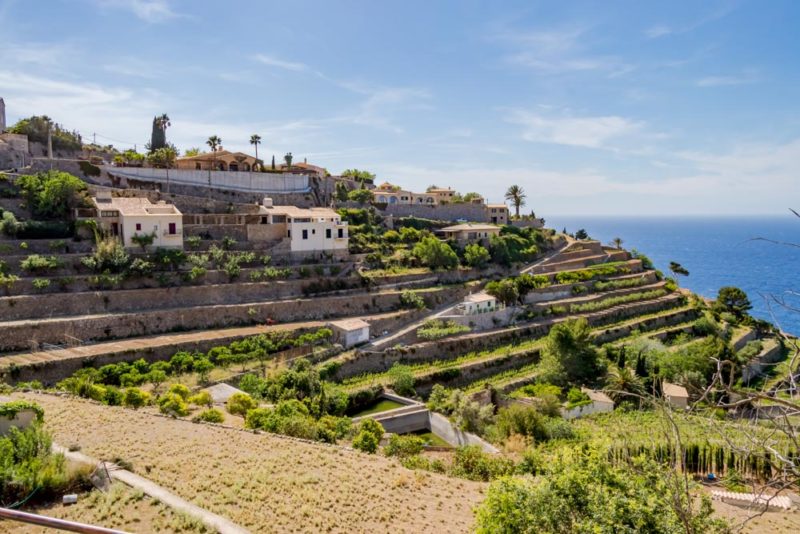
The Moorish terraces of the Tramuntana Mountains are one of the top things to see in Majorca. Plus, you’ll love them even more when you learn how the beautiful terraces are one of the major reasons why Majorcans can produce such delectable vintages of wine!
Head to the village of Banyalbufar, and you can spend the day strolling through stone terraces, gorging on olives, and tasting local wines. Banyalbufar is one of Majorca’s most fascinating wine production centers because for hundreds of years, the area was known across Europe for its Malvasia grapes.
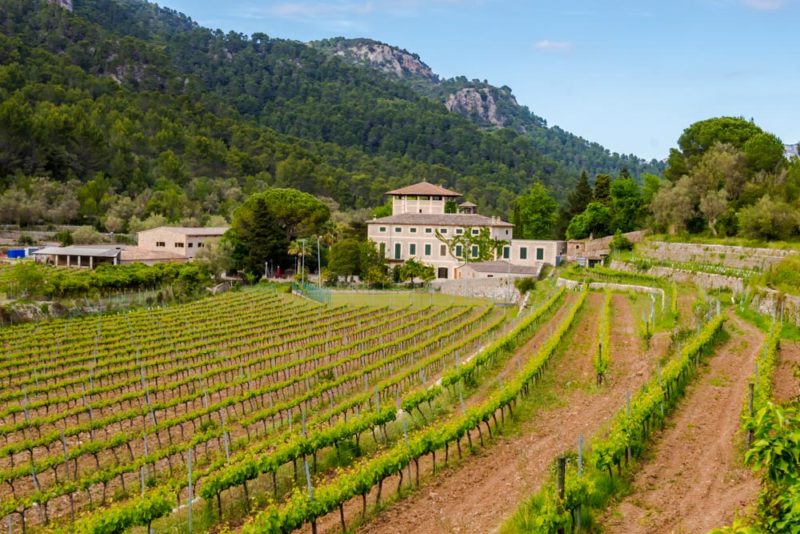
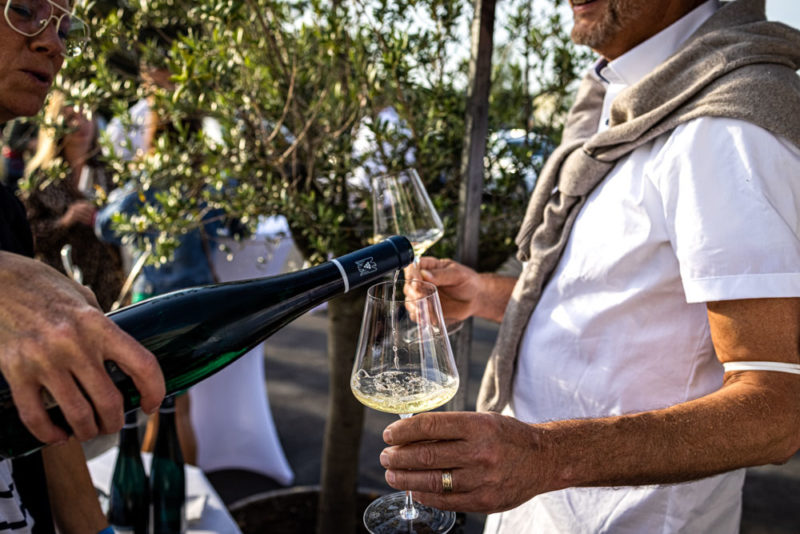
The grapes grew exceptionally well in the terraces that the Moors had constructed for agriculture, with vineyards protected from the winds by the stone walls and nourished by the elaborate irrigation systems. In the 19th century, though, a disease killed off the grapes, and wine production all but stopped.
Visit one of the local wineries, though, and you’ll soon discover that the Malvasia grape was somehow rediscovered in the 1980s. Once thought extinct, the grape was nurtured and grown by local villagers in Banyalbufar. Soon enough, they were producing Malvasia wines in the terraces just as their ancestors had for many hundreds of years before them!
9. Uncover Moorish History at Jardines de Alfabia
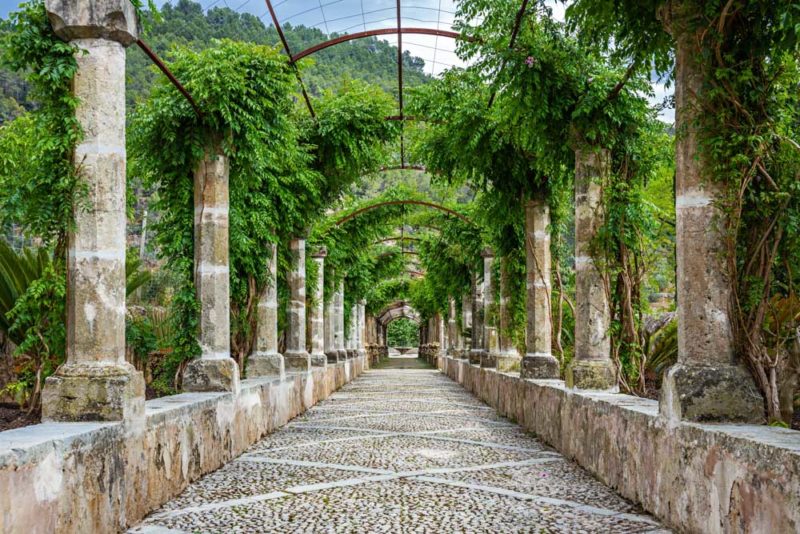
Majorca was held by Moorish kingdoms for many centuries, rather than Spanish. Across the island, you can still find unique Moorish, Arab, and Islamic influences waiting to be uncovered.
One of the best places to visit in Majorca is Jardines de Alfabia, a countryside estate that’s thought to date back to the late 12th century. This was right before the Spanish reconquered Majorca, and much of the Islamic architecture and many Arabic inscriptions still remain today.
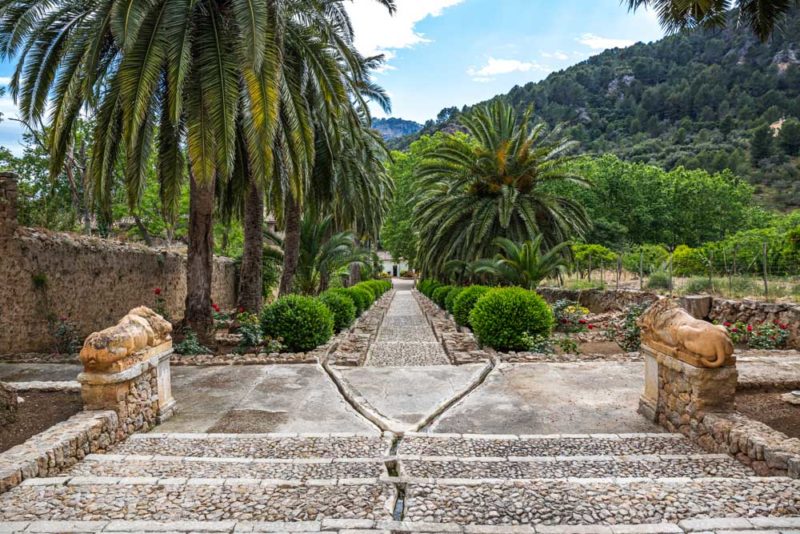
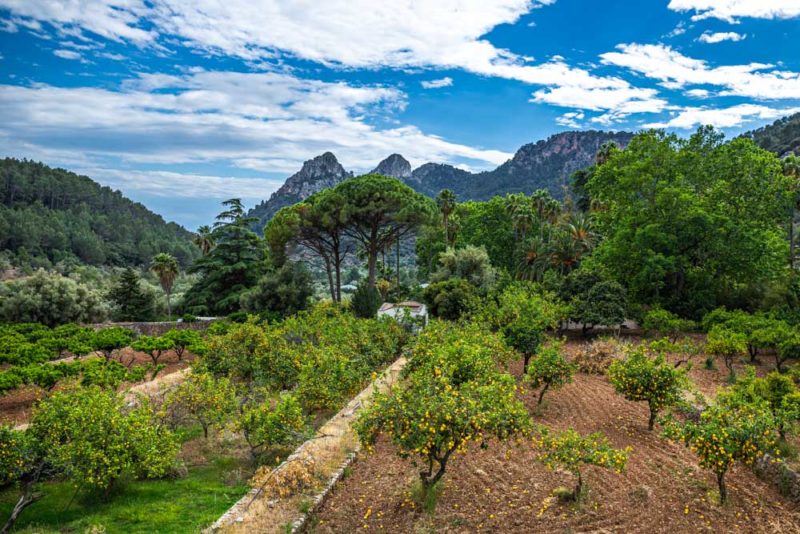
The best part about the estate is the gardens. You’ll love the beautiful, landscaped gardens that are just perfect for an afternoon stroll.
If you delve deeper into the past, you’ll soon discover that the garden itself can trace its roots back to the Moorish era. If that’s not enough, this just happens to be one of the finest examples of Moorish horticulture that remains in Spain!
10. Cycle (or Road Trip) to Cap de Formentor
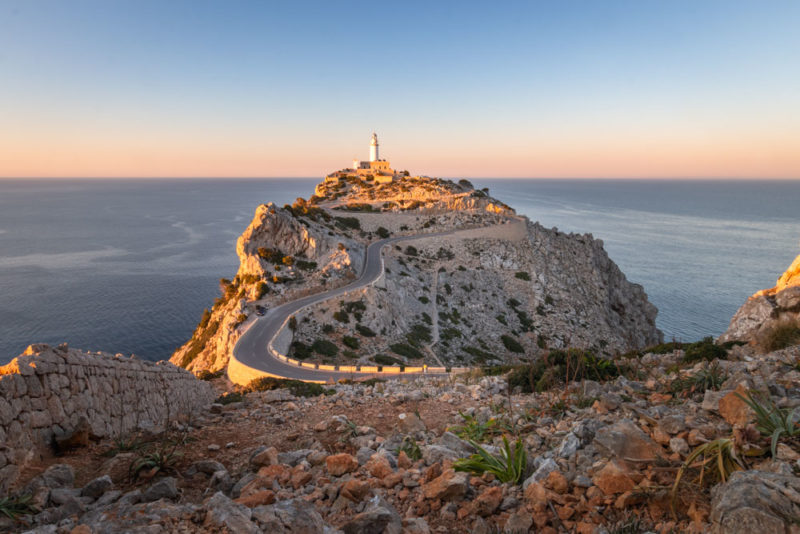
If you’re a big fan of scenic viewpoints (and let’s face it, who isn’t?), then we know you’re going to love exploring Cap de Formentor. This small peninsula is the most northerly point in Majorca, and it’s one of the best places on the island for a bike ride or a road trip.
Cap de Formentor can be reached from Port de Pollensa, which is around 15 kilometers away by road. The drive, or bike ride, is absolutely stunning as you pass rugged cliffs on the northernmost edge of the Tramuntana Mountains.
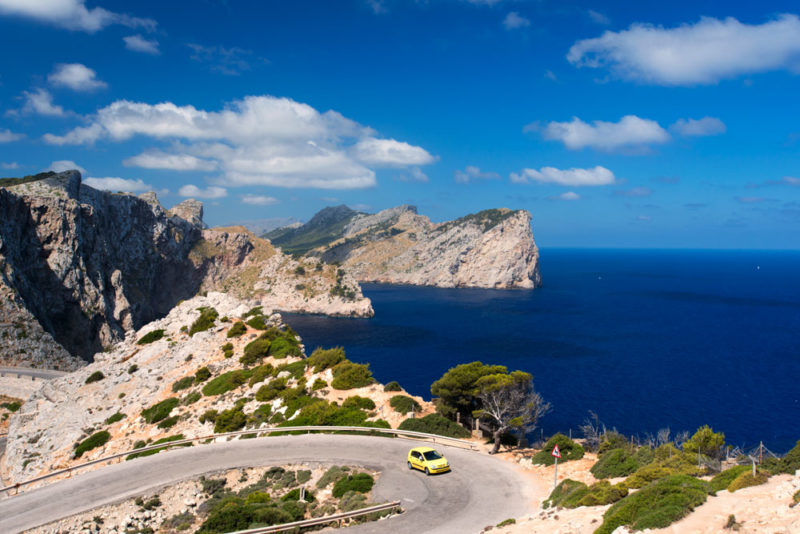
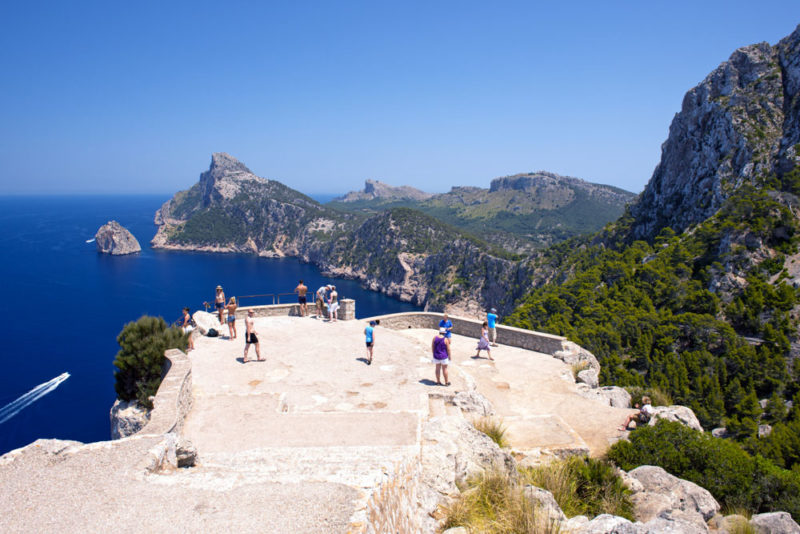
As you leave Port de Pollensa, you’ll meet Es Colmer, where you’ll be stunned by the dramatic scenery that stretches ahead of you. This is one of the most famous viewpoints in Majorca, and you’re not even at the end of the peninsula yet!
When you do reach the end of the peninsula, the views out over the Mediterranean Sea are guaranteed to blow you away, so make sure you’ve packed your camera!
11. Take a Catamaran Cruise along the Coast
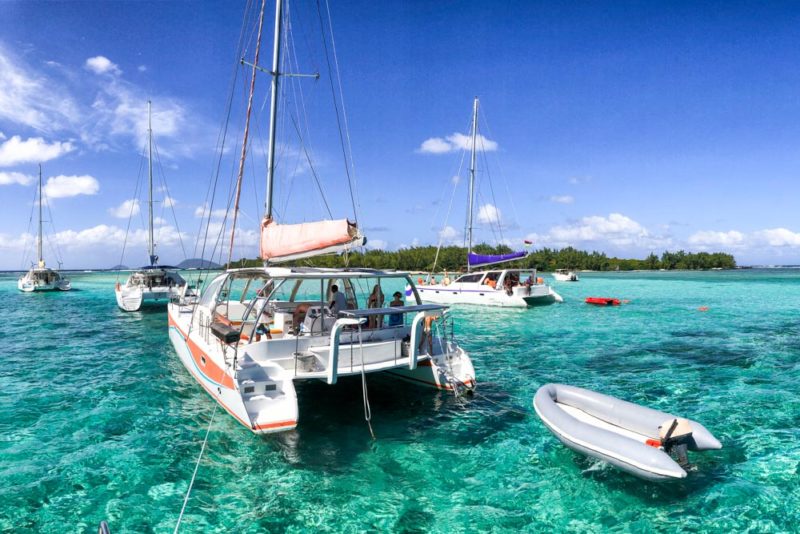
As the largest island in the Balearics, Majorca has hundreds of miles of spectacular coastline to explore, and there’s no better way to do it than on a catamaran cruise!
In the summer, when the sun is perpetually shining, catamaran cruises leave daily from several locations in Majorca. You can join tours from the marina in Palma and from the resort areas.

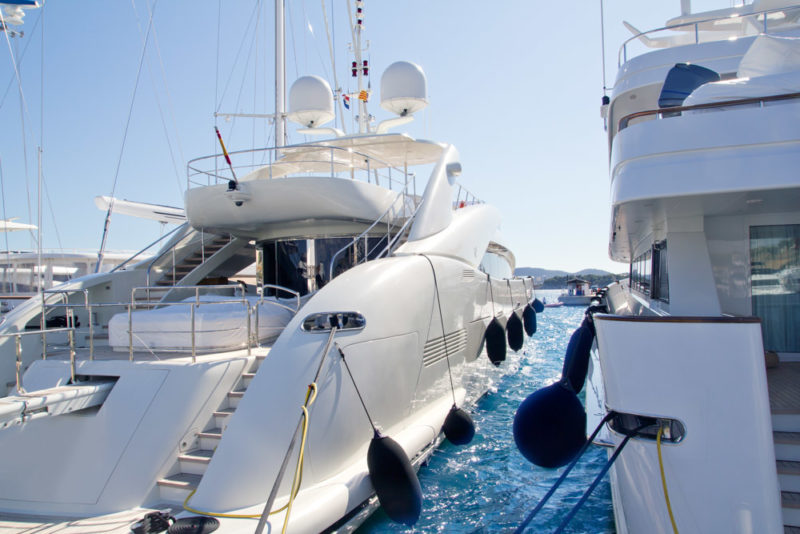
Itineraries will vary, and there’s more than enough coastline for you to organize more than one day trip. Popular cruises include a tour of the Bay of Palma, where you’ll cruise to secluded beaches and find colorful snorkeling spots.
Other great cruising locations are found on the north coast, where you can explore the rugged terrain of Cap de Formentor before visiting the smoother sands of the local beaches. You can join public trips or charter a boat for you and your friends. You can expect a half-day or full-day trip to include snorkeling gear, lunch, and maybe even a few cold drinks.
Wherever your catamaran cruise takes you, you can rest assured that you’re going to be ticking off a Majorca bucket list item from your itinerary!
12. Visit the Roman Ruins of Alcudia

History fans will want to include a day trip to Alcudia on their Majorca itinerary. This is the place where you can find the ruins of the island’s ancient Roman capital!
The Roman settlement of Pollentia was founded around 100 BC, and it quickly became one of the most important locations in the Balearic Islands. The ruins have been remarkably well excavated and preserved. Explore the grounds, and you can find a Roman theater, a forum, and many residential buildings in the archeological area.
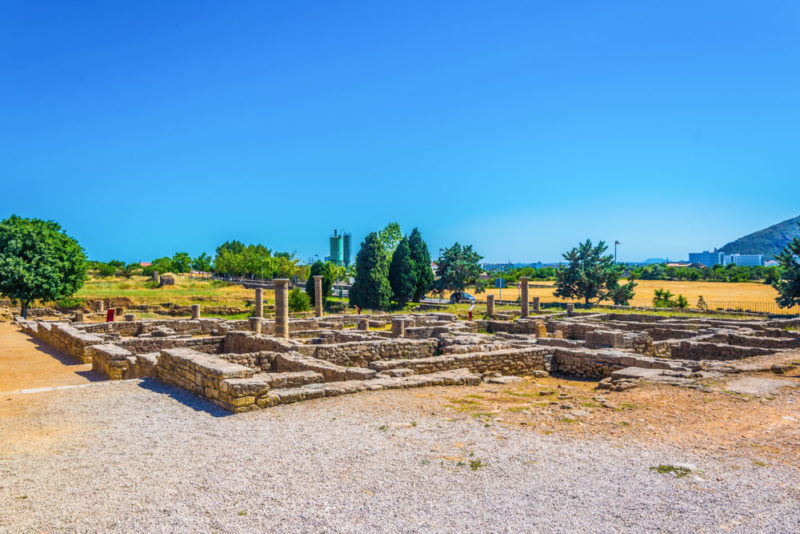

The ruins are located in the north of the island, next to the modern settlement of Alcudia and close to the Bay of Pollensa.
13. Explore the Artistic Legacy of Deia
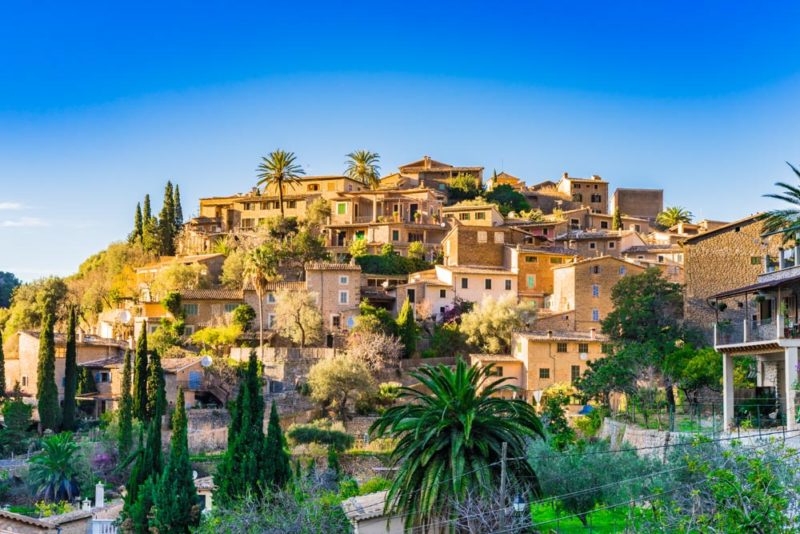
The sheer beauty of Majorca’s mountains has attracted artists and writers for centuries, but one village, in particular, has a unique creative legacy that has to be explored.
Deep in the Tramuntana Mountains, you can find the small village of Deia. Ramshackle stone houses, vineyards, and olive groves rise into the hills while Deia Cove spills out into the Mediterranean Sea. It’s postcard-perfect, and it’s long been a favorite haunt of literary types and painters.
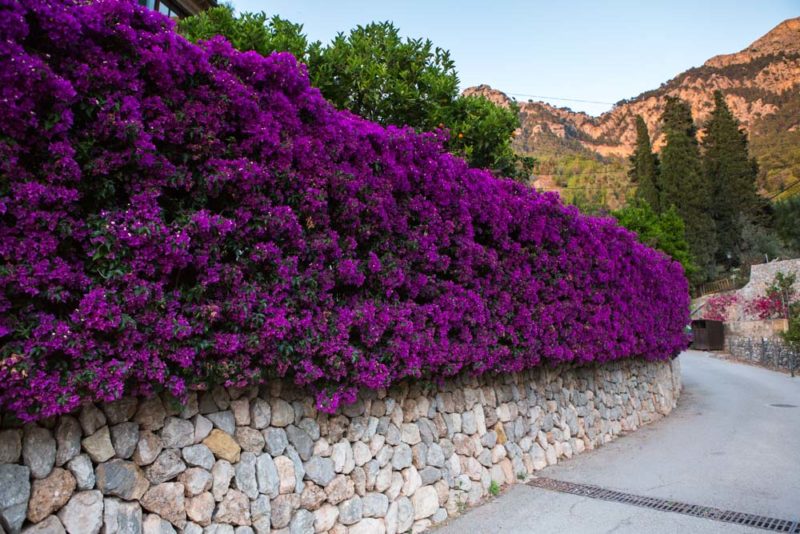
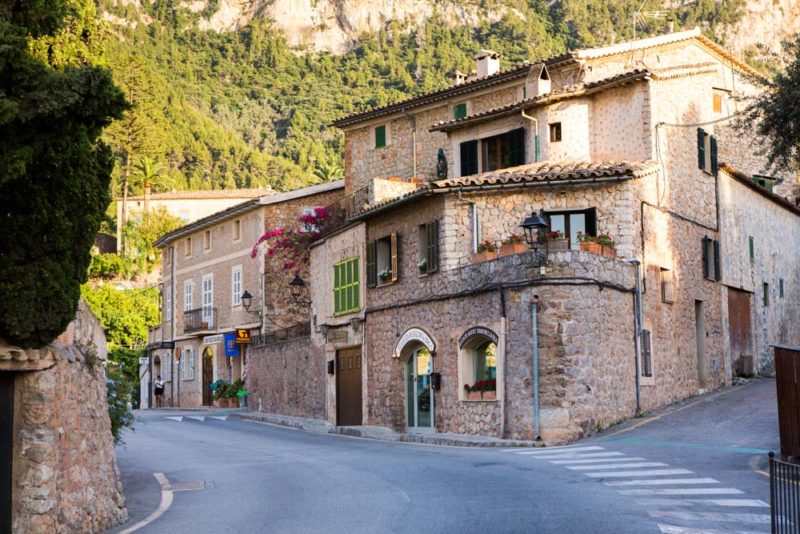
The writer who put Deia on the map was Robert Graves, the English war poet and playwright who spent much of the latter part of his life here. Robert Graves’ former residence is now a museum. Plus, there are many more art galleries and exhibitions in the area.
Deia has some lovely monasteries to visit, the coastline is simply spectacular, and there’s excellent hiking to be had in the surrounding mountains. All in all, we know you’re going to love visiting the charming streets of Deia on your next Majorcan vacation!
14. Gorge on Pinchos and Tapas in Palma

As with any Spanish destination, one of the best things to do in Majorca is to eat. For a seriously delicious experience, we recommend an evening of pinchos and tapas in Palma, where you’ll find the island’s best bars and restaurants.
Pinchos are a favorite in Catalonia, northern Spain, and here in the Balearics. You take a small piece of crusty bread then pile it high with meat, fish, tortillas, and more. The toppings are held onto the bread by a cocktail stick, which the locals call a pincho, or a spike.
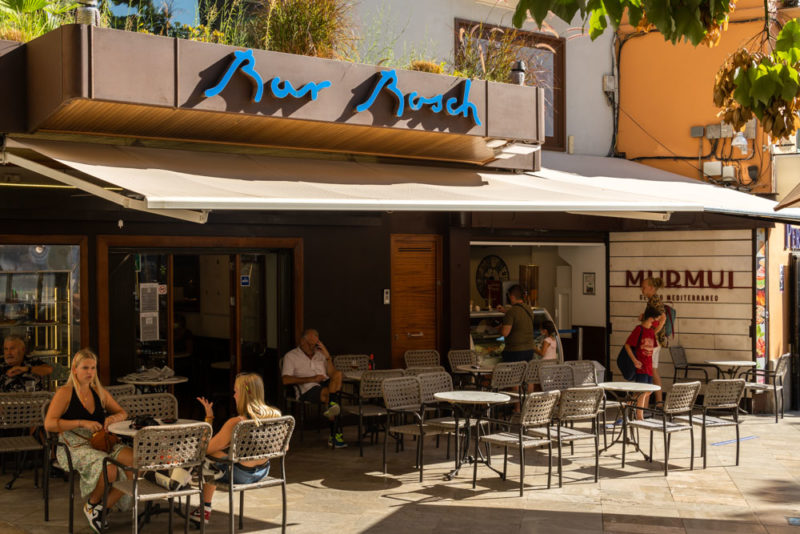
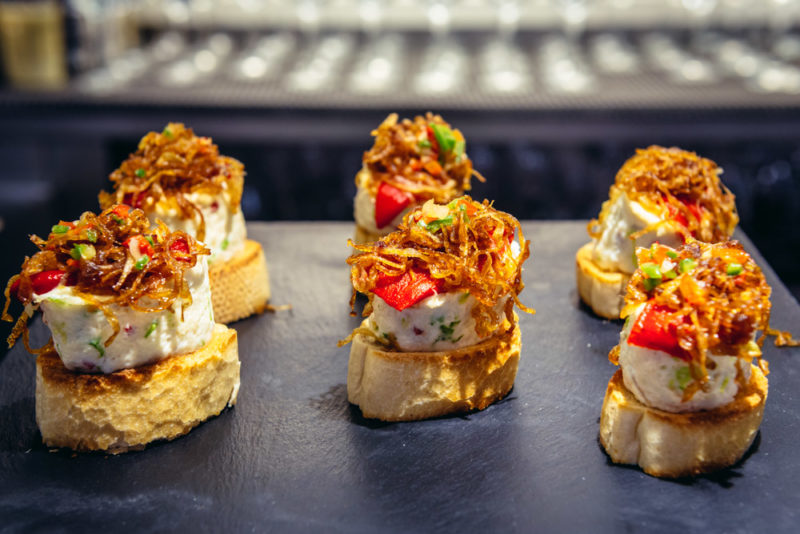
There’s even a dedicated Tapas Trail that will help you uncover the best places to eat and drink in the city. Palma’s tapas scene is a late-night affair, but you can start the evening with a few pinchos to keep you going.
15. Scuba Dive in the Mediterranean Sea
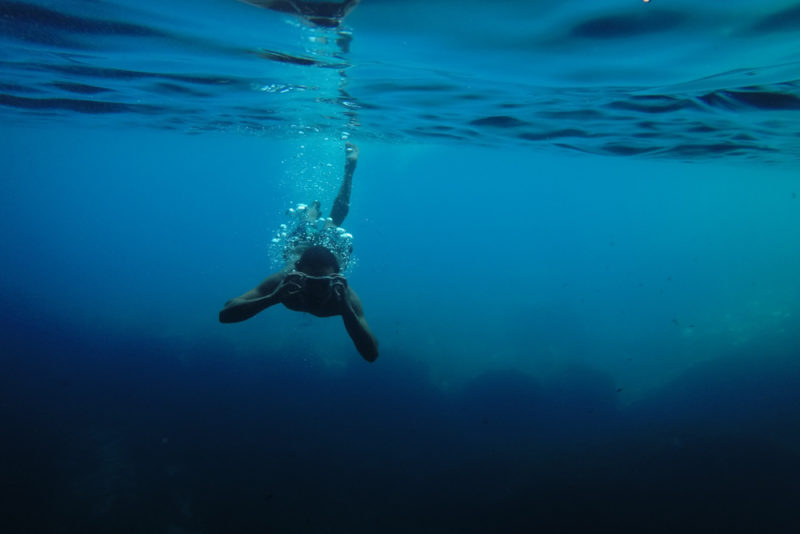
One of the coolest things to do in Majorca is to go scuba diving. The island is surrounded by the warm waters of the Mediterranean Sea, and for much of the year, conditions are perfect for a diving holiday.
There are dive sites for all abilities in Majorca. If you don’t have your qualifications, this is a fantastic place to learn the ropes, practice, qualify, and develop as a diver!
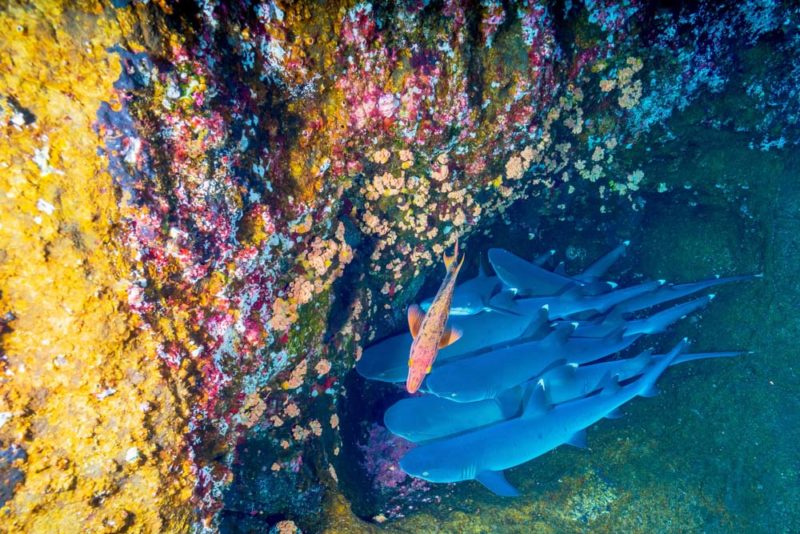
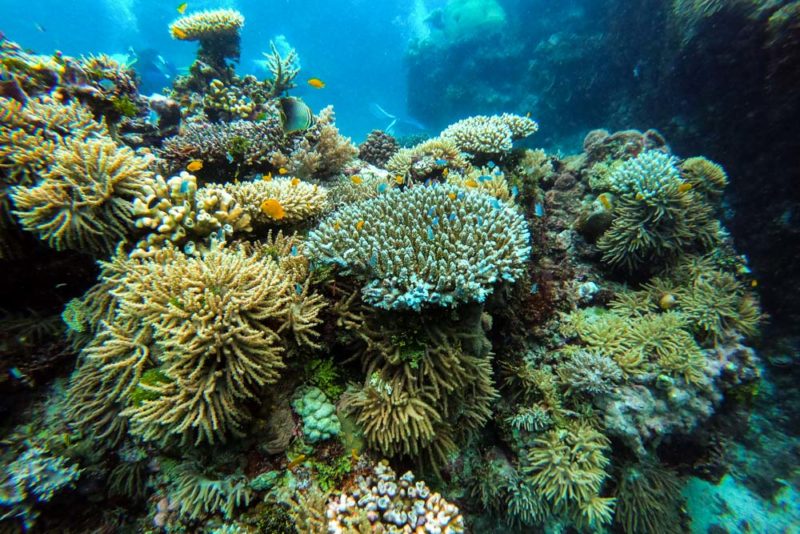
For beginners, the protected marine reserve of Illa de Toro on the southwest side of Majorca is a wonderful place to dive. For more advanced divers, the many shipwrecks that litter the seabed in the Bay of Palma (some as far down as 35 meters!) offer some of the best wreck diving in Spain.
There are many more marine preserves, hidden coves, and secluded islands that are popular with divers, too. You’ll find everything from shore dives to boat dives waiting for you in Majorca!
There you have it! The 15 best things to do in Majorca. What’s your favorite thing to do in Majorca?
Planning a trip to Spain? Check out our favorite books and travel guides!
SHARE THIS ON PINTEREST
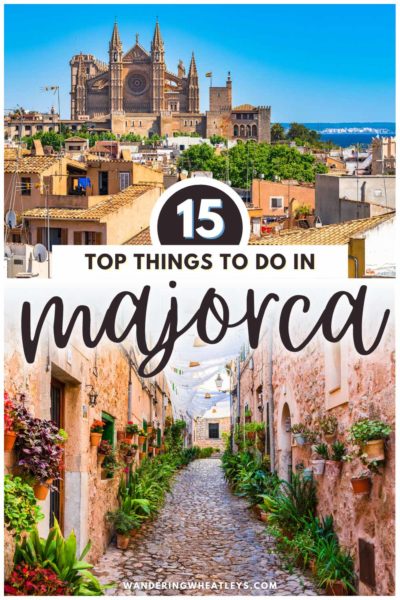
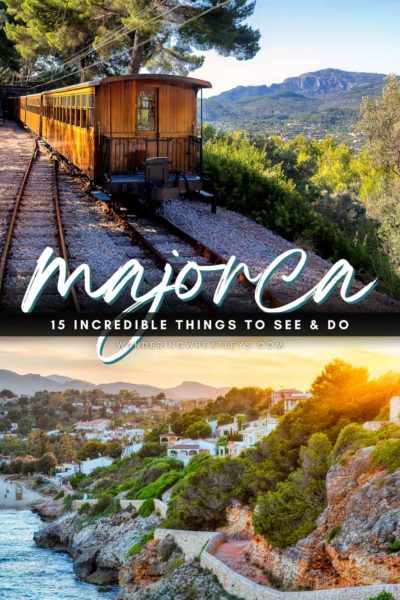
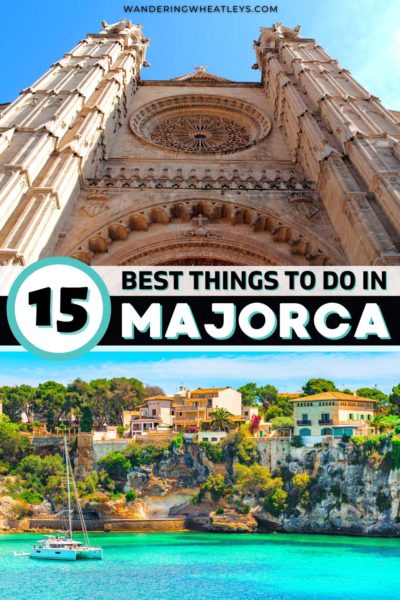
Frequently Asked Questions
Majorca is home to many unique dishes, but ensaimadas are one of the island’s most popular culinary traditions. If you’re a fan of baked goods, you’ll quickly find out that ensaimadas are rather addictive! Ensaimadas are traditionally prepared for festivals and holidays, and the secret ingredient is typically lard.
If you’re looking for an active, outdoor vacation, the Dry Stone Route is one of the top things to do in Majorca. This beautiful long-distance hiking trail takes you through the spectacular Tramuntana Mountains. You can tackle it in stages or attempt the entire route in one go. Known locally as Ruta de Pedra en Sac (or less romantically, as GR-221), the Dry Stone Route offers just over 100 miles of waymarked hiking through mountains, valleys, and along the coastline.
If you’re a big fan of scenic viewpoints (and let’s face it, who isn’t?), then we know you’re going to love exploring Cap de Formentor. This small peninsula is the most northerly point in Majorca, and it’s one of the best places on the island for a bike ride or a road trip. Cap de Formentor can be reached from Port de Pollensa, which is around 15 kilometers away by road. The drive, or bike ride, is absolutely stunning as you pass rugged cliffs on the northernmost edge of the Tramuntana Mountains.
History fans will want to include a day trip to Alcudia on their Majorca itinerary. This is the place where you can find the ruins of the island’s ancient Roman capital! The Roman settlement of Pollentia was founded around 100 BC, and it quickly became one of the most important locations in the Balearic Islands. The ruins have been remarkably well excavated and preserved.
One of the coolest things to do in Majorca is to go scuba diving. The island is surrounded by the warm waters of the Mediterranean Sea, and for much of the year, conditions are perfect for a diving holiday. There are dive sites for all abilities in Majorca. If you don’t have your qualifications, this is a fantastic place to learn the ropes, practice, qualify, and develop as a diver!
Once you’ve had your fill of sun, sea, and sand, then why not spend a day immersed in history and Gothic architecture in Palma? The city’s Old Town – or El Casco Antiguo, as the locals call it – is one of the best Majorca sightseeing destinations. You can easily spend hours strolling through its charming alleyways and losing your way on the cobblestone streets.

